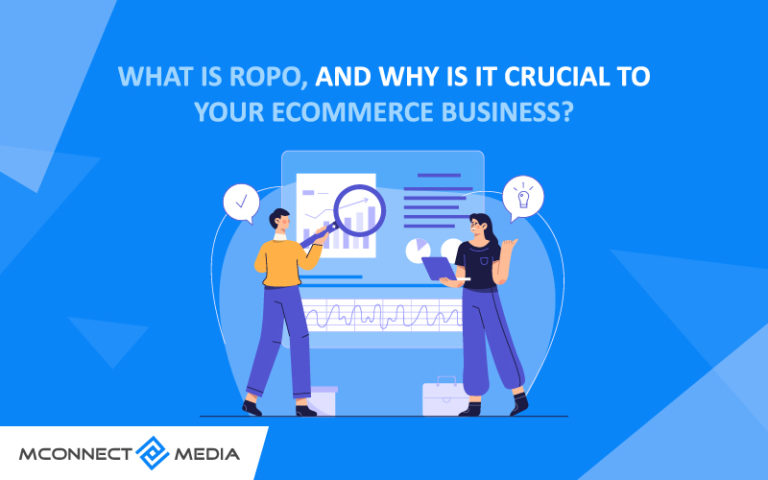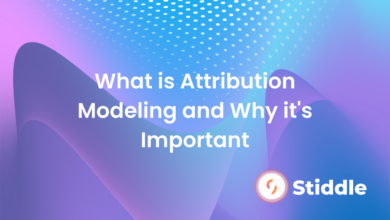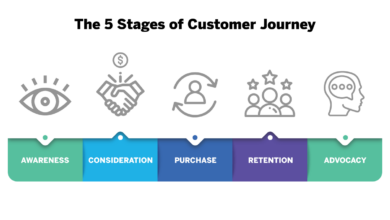
Everything You Need to Know About ROPO & Business
Everything you need to know about ROPO and how it can help your business. ROPO, or Research Online, Purchase Offline, is a crucial element of modern retail. Understanding this phenomenon is key to success in today’s marketplace, as customers increasingly use the internet to research products before buying them in physical stores. This in-depth guide explores the entire ROPO customer journey, from initial research to final purchase, revealing how businesses can leverage this trend to boost sales and enhance the overall customer experience.
This comprehensive guide will cover the basics of ROPO, including its history and evolution, customer journey analysis, impact on business strategies, and tools for optimization. We’ll also explore methods for measuring success, showcasing real-world case studies and future trends in the ROPO landscape.
Introduction to ROPO
ROPO, an acronym for Research Online, Purchase Offline, describes a crucial consumer behavior pattern in the modern retail landscape. It signifies the trend of consumers researching products and services online before making a purchase decision in a physical store. This shift in consumer behavior has significant implications for businesses, forcing them to adapt their strategies to effectively engage customers at every touchpoint.The fundamental concept of ROPO highlights the interconnectedness of online and offline experiences.
Consumers increasingly rely on online resources – reviews, comparisons, and product details – to inform their offline purchasing decisions. This dual approach underscores the importance of a seamless and consistent brand experience across both channels. A strong online presence, coupled with engaging in-store experiences, is vital for businesses to leverage the ROPO phenomenon and maximize sales opportunities.
Definition of ROPO
ROPO is a consumer behavior pattern where potential customers research products or services online (e.g., browsing websites, reading reviews, comparing prices) and then proceed to purchase the item in a physical store. This behavior signifies the interplay between online information gathering and offline purchase decisions.
Significance of ROPO in Modern Retail
ROPO’s significance in modern retail stems from its impact on consumer decision-making. Customers are more empowered than ever before with access to extensive online information. This empowers them to thoroughly research products and compare options. The shift towards ROPO forces retailers to bridge the gap between their online and offline presences, creating a unified customer experience.
History of ROPO and its Evolution
The rise of e-commerce and the proliferation of smartphones have played a pivotal role in the evolution of ROPO. Early stages of ROPO were characterized by consumers using online resources to gather information, then traveling to a physical store to finalize the purchase. Over time, the reliance on online research for offline purchases has become increasingly prevalent. The rise of mobile technology further accelerated this trend, enabling consumers to research products on their smartphones while in a physical store or in transit.
Key Differences Between Online Research and Offline Purchase Behaviors
| Characteristic | Online Research Behavior | Offline Purchase Behavior |
|---|---|---|
| Information Gathering | Primarily relies on websites, comparison engines, and online reviews to evaluate products, prices, and availability. | Relies on in-store displays, demonstrations, and sales associates to gather information. |
| Decision Making | Often involves comparisons across multiple options and extensive research. | Decision making can be influenced by immediate in-store experiences and the sales associate’s knowledge. |
| Purchase Trigger | May be triggered by a specific need, or impulse purchase after browsing online. | Purchase may be influenced by in-store displays, demonstrations, or the availability of the product. |
| Customer Interaction | Interaction is often limited to websites, social media, or online chat. | Direct interaction with sales associates, and the physical store environment, are crucial. |
| Product Selection | Product selection is often influenced by online reviews, product specifications, and price comparisons. | Product selection is influenced by immediate availability, physical assessment of the product, and staff recommendations. |
Customer Journey in ROPO

The ROPO (Research Online, Purchase Offline) customer journey is a fascinating blend of online research and offline transactions. Understanding this journey is crucial for businesses to effectively engage customers at every touchpoint, from initial interest to final purchase. It’s no longer a simple linear path; rather, it’s a dynamic interaction between online and physical experiences.This intricate customer journey requires businesses to adapt their strategies, moving beyond traditional online marketing and integrating physical store experiences into the broader customer relationship.
ROPO, or Research Online Purchase Offline, is a powerful strategy for businesses looking to boost sales. Understanding how customers research products online and then purchase them in-store is key. A great example of a successful ROPO strategy is Janine Pelosi’s work at Zoom, as detailed in a fascinating article about Janine Pelosi, CMO Zoom. Analyzing how companies effectively leverage ROPO can provide valuable insights to optimize your own business’s online presence and drive in-store conversions.
Ultimately, a well-executed ROPO strategy can significantly increase your bottom line.
It demands a holistic approach, considering the customer’s entire path, from initial inspiration to the final purchase, whether made online or in-store.
Typical Customer Journey Stages
The ROPO journey typically begins with online research. Customers utilize search engines, product comparison websites, and social media to gather information, compare prices, and evaluate product features. This initial phase often involves multiple touchpoints across various digital platforms.
Looking to boost your business’s online presence? Understanding how Return on Purchase (ROPO) works is key. It’s all about the seamless transition from online research to in-store purchases. This strategy can dramatically improve your conversion rates. For a great example of how this works in practice, check out Sarah Folmar, marketing manager at First Factory, sarah folmar marketing manager first factory.
Her team’s approach highlights the importance of a well-structured online presence and how that translates into real-world success, proving how crucial ROPo is for modern business strategies.
- Online Research: Customers explore various online resources to discover products, compare features, and read reviews. This phase involves browsing product websites, social media pages, and online forums. Examples include researching specific phone models online, comparing prices of various laptops, or reviewing user feedback on different car models.
- Store Visit Consideration: The next stage involves the customer actively considering a physical store visit. Factors like store location, availability of specific items, and perceived value drive this decision. Customers might plan a visit based on online promotions or specific store offerings.
- In-Store Experience: The physical store visit is a critical moment. The store environment, staff interactions, product demonstrations, and the overall experience significantly impact the customer’s decision. A well-designed store environment and knowledgeable staff can enhance the experience and boost conversion rates.
- Purchase Decision: This is the culmination of the journey. The customer makes a final decision to purchase the product, either in-store or online. This could be influenced by factors like in-store promotions, immediate availability, or the convenience of a particular online ordering process.
Touchpoints and Friction Points
Understanding the various touchpoints is vital for optimizing the customer journey. A seamless experience across online and offline channels is key to maximizing conversion rates. However, friction points can disrupt this flow.
- Website Experience: A poor website experience, including slow loading times, confusing navigation, or lack of product information, can deter customers. An intuitive and well-designed website with clear product details and secure checkout is critical for smooth online interactions.
- In-Store Experience: A poorly-stocked store, unhelpful staff, or a confusing store layout can create negative experiences. Ensure that staff is knowledgeable about the products and that the store environment is conducive to a positive purchase experience.
- Inconsistency Between Online and Offline: Discrepancies between online pricing and in-store prices, or lack of availability of online-featured products in-store can create significant friction. Maintaining consistency across all channels is essential to avoid losing customers.
- Delivery and Logistics: For online purchases, issues with delivery timelines, shipping costs, or handling of orders can negatively impact customer satisfaction. Efficient logistics and transparent communication are crucial.
Visual Representation of the ROPO Customer Journey
- Online Research: Initial interest and information gathering on various online platforms.
- Store Visit Consideration: Customers evaluate store proximity, opening hours, and specific store promotions.
- In-Store Interaction: Customer interacts with products, staff, and the store environment.
- Purchase Decision: Finalization of the purchase, either online or in-store.
Impact on Business Strategies
ROPO (Research Online, Purchase Offline) is significantly reshaping business strategies across various industries. Understanding how consumers navigate this dual-channel journey is crucial for optimizing marketing efforts and boosting sales. By adapting to ROPO’s nuances, businesses can enhance the entire customer experience, leading to higher conversion rates and increased customer loyalty.The shift towards ROPO necessitates a re-evaluation of traditional marketing strategies.
Companies must now focus on seamlessly connecting the online and offline experiences, ensuring a consistent brand message and a positive impression at every touchpoint. This includes carefully crafting online content that inspires trust and desire, while also meticulously preparing for a compelling in-store experience that converts online interest into tangible sales.
Adapting Strategies for Different Industries
Different industries experience ROPO differently. Retail, for example, relies heavily on the in-store experience, so optimizing the physical store environment and ensuring it meets online expectations is paramount. E-commerce businesses, on the other hand, need to leverage online research to drive traffic to their websites and convert online interest into purchases. Tourism and hospitality companies find themselves needing to address both the online research and the offline experience for a comprehensive approach to travel and lodging reservations.
Each industry must adjust its strategies based on its specific customer journey.
Optimizing the In-Store Experience
The in-store experience is no longer a secondary element in the ROPO journey. It is a crucial step in the customer decision-making process. A poorly executed in-store experience can lead to lost sales and a negative brand perception. Retailers must ensure their stores are equipped to handle the influx of customers who have researched online. This includes having knowledgeable staff, providing a visually appealing and well-organized store layout, and ensuring easy product access and clear product information.
Well-placed and informative signage, along with interactive displays, can significantly improve the in-store experience. Providing exceptional customer service, including tailored assistance and recommendations, is also crucial in fostering a positive and memorable experience.
Strategies for Optimizing the Customer Experience
Creating a seamless and positive ROPO journey demands a comprehensive approach. Companies must ensure a consistent brand experience across both online and offline channels. Clear communication of product features, pricing, and availability online, followed by an equally impressive in-store experience, are key components. Consider using a unified customer data platform (CDP) to consolidate data from both online and offline channels.
This allows for a comprehensive view of customer behavior, enabling targeted marketing and personalized interactions throughout the entire journey. Personalizing the customer experience through tailored recommendations, offers, and promotions can increase conversion rates and foster customer loyalty.
Tools and Technologies for ROPO
ROPO, or Research Online Purchase Offline, is a complex customer journey. Understanding how customers move between online research and in-store purchases requires sophisticated tracking and analysis. Effective tools and technologies are crucial for businesses to optimize this process and maximize conversions. This section delves into the technologies and methods to gain insights into ROPO customer behavior, ultimately boosting business strategies.The right tools enable businesses to see the complete customer journey, from initial online research to the final offline purchase.
This holistic view allows for data-driven decisions, fine-tuning both online and offline experiences to improve the ROPO conversion rate.
ROPO Data Tracking and Analysis Tools
Effective ROPO strategies hinge on accurately tracking and analyzing customer behavior. A range of tools provide valuable data insights, facilitating a deep understanding of customer preferences and behaviors.
- Web Analytics Platforms (e.g., Google Analytics, Adobe Analytics): These platforms offer comprehensive data on website traffic, user behavior, and conversion rates. Tracking user journeys across different touchpoints, from initial product browsing to final purchase, provides critical insights into ROPO conversion rates. This data allows businesses to see which products are most frequently researched online and then purchased offline, aiding in targeted marketing and product placement.
- Customer Relationship Management (CRM) Systems: Integrating CRM systems with web analytics platforms enables a complete picture of the customer journey. CRM data provides information on customer demographics, purchase history, and preferences, further enriching the understanding of ROPO behavior. By linking online research to offline purchases, businesses can identify trends and tailor their strategies.
- Point-of-Sale (POS) Systems: POS systems offer critical data on in-store transactions, including products purchased, customer demographics, and purchase times. Integrating POS data with web analytics reveals the exact products researched online and purchased offline, enabling targeted promotions and product displays.
- Marketing Automation Platforms: These platforms automate marketing campaigns and track customer interactions across multiple channels, including email, social media, and in-app messaging. Tracking the specific campaigns that influence online research and lead to offline purchases allows businesses to optimize their marketing strategies and budget allocation.
Optimizing Online and Offline Experiences
Understanding the customer journey is paramount for optimizing experiences. A seamless transition between online research and offline purchase is crucial for a positive customer experience.
- Website Optimization: A user-friendly website with clear product information, high-quality images, and easy navigation is essential. Businesses should use website analytics to identify areas for improvement, ensuring a positive online experience that encourages customers to complete their research and consider a purchase offline.
- In-Store Experience Enhancement: The in-store experience should be equally compelling. Product displays aligned with online research, knowledgeable staff, and a welcoming atmosphere are crucial. Ensuring product availability and providing accurate information about the products customers have researched online can improve conversion rates.
- Personalized Recommendations: Using data to provide personalized product recommendations both online and offline can increase the likelihood of a purchase. Customers who have researched specific products online should receive targeted recommendations in-store, creating a more engaging and effective experience.
Data-Driven ROPO Strategies
Data analysis is key to maximizing ROPO effectiveness. Collecting and interpreting data allows for proactive adjustments to marketing campaigns and product placement strategies.
- A/B Testing: Testing different website designs, product descriptions, and marketing messages can reveal which elements resonate most with customers and drive ROPO conversions. Testing different approaches in the physical store can also improve the offline experience, enhancing the ROPO conversion rate.
- Targeted Campaigns: Identify the specific products customers research online and then purchase offline. Create targeted marketing campaigns that emphasize these products and their availability in stores. This strategy improves efficiency and boosts the ROPO conversion rate.
- Predictive Modeling: Analyze historical ROPO data to predict future customer behavior. This allows businesses to proactively adjust their strategies and optimize their marketing campaigns, leading to increased conversion rates.
Optimizing the ROPO Experience
The ROPO (Research Online, Purchase Offline) customer journey presents a unique challenge and opportunity for businesses. Successfully navigating this path requires a nuanced understanding of how customers interact with both online and offline touchpoints. This section focuses on strategies for optimizing the entire experience, from initial online research to the final offline purchase.
Optimizing the Online Research Experience
The online research phase is critical in the ROPO journey. Customers often utilize search engines, product comparison websites, and social media to gather information and evaluate options. A seamless and informative online experience can significantly influence their decision-making process. To optimize this stage, businesses should prioritize a user-friendly website with detailed product information, high-quality images, and compelling video content.
Clear calls to action, strategically placed throughout the site, encourage customers to take the next step in their journey.
- Comprehensive Product Pages: Detailed product descriptions, high-quality images from multiple angles, and customer reviews are crucial. Consider 360-degree views and interactive elements to enhance engagement and understanding. Adding videos showcasing the product’s features and usage further strengthens the customer’s perception.
- Intuitive Navigation: A well-organized website with easy-to-find product categories, search functionality, and filtering options allows customers to quickly locate desired items. Clear sitemaps and breadcrumb navigation contribute to a smooth user experience.
- Mobile Optimization: A significant portion of ROPO research occurs on mobile devices. Ensure the website is responsive and loads quickly across all platforms, providing a seamless mobile experience.
- Personalized Recommendations: Leveraging data about past browsing history and product preferences can tailor recommendations to individual customer needs. Providing relevant and accurate recommendations increases the likelihood of a positive purchase decision.
Optimizing the Offline Purchase Experience
The offline purchase experience is the culmination of the ROPO journey. A positive in-store experience can cement the purchase decision and create a loyal customer. Businesses need to ensure that the offline experience matches or exceeds the expectations set during online research.
So, you’re looking to boost your brand’s visibility and drive sales? Understanding Return on Purchase Optimization (ROPO) is key. It’s all about optimizing the customer journey, guiding them seamlessly from online discovery to in-store purchases or vice versa. A crucial aspect of this is leveraging Amazon Brand Lift campaigns, which can help you measure the effectiveness of your advertising on Amazon and how it impacts your brand.
Want to dive deeper into how Amazon Brand Lift can enhance your ROPO strategy? Check out this resource on amazon brand lift. Ultimately, mastering ROPO unlocks powerful opportunities for increased sales and customer engagement.
- Consistent Brand Messaging: The offline experience should align with the online brand identity. Clear signage, knowledgeable staff, and consistent product information across channels foster a unified brand experience. Using the same product descriptions and specifications across online and offline platforms ensures accuracy and trust.
- Exceptional Customer Service: Providing personalized assistance and addressing customer concerns promptly can significantly influence the purchase decision. Trained staff who can answer questions about product specifications, features, and usage are essential.
- Convenient In-Store Navigation: Well-organized stores with clear signage and easy-to-find product locations facilitate a smooth shopping experience. Staff can proactively assist customers in locating specific products.
- Incentivize Offline Purchases: Offering exclusive in-store deals, promotions, or special experiences can incentivize customers to complete their purchase offline. Providing a reason for choosing an in-store experience, like a personalized consultation or fitting, can drive customers to the store.
Tailoring Experiences to Customer Needs
Matching online and offline experiences to individual customer needs requires a detailed understanding of their preferences and expectations.
- Data-Driven Personalization: Collecting and analyzing customer data (browsing history, purchase history, demographics) allows for the creation of personalized experiences. Personalized product recommendations and tailored promotions can enhance the customer experience.
- Understanding Customer Journeys: Analyzing customer journey data can identify specific pain points and opportunities for improvement. Addressing these issues through tailored online and offline experiences can increase customer satisfaction and conversion rates.
Personalized Recommendations Across Channels, Everything you need to know about ropo and how it can help your business
Different approaches to personalized recommendations can be employed across online and offline channels.
- Online Recommendations: Utilize algorithms and machine learning to generate personalized product recommendations based on past browsing behavior and preferences. This could involve displaying related products, similar items, or recommended products based on customer demographics. These recommendations can be delivered through various online channels, including email, website banners, and product pages.
- Offline Recommendations: In-store recommendations can leverage similar data and algorithms to suggest relevant products based on customer interactions. Employing staff training to recognize patterns in customer preferences and recommend relevant products can enhance the in-store experience. Using digital kiosks or tablets to display personalized recommendations can also be effective.
Measuring ROPO Success
ROPO, or Research Online, Purchase Offline, is a complex customer journey that requires careful tracking and analysis to understand its true impact. Simply knowing that customers are researching online and then buying offline isn’t enough; measuring the effectiveness of ROPO strategies is crucial for optimizing marketing spend and improving overall business performance. This section dives into the metrics, methods, and insights needed to assess the success of your ROPO initiatives.Understanding the nuances of ROPO conversion is key to maximizing its benefits.
ROPO isn’t just a shift in customer behavior; it’s a fundamental change in the way businesses must interact with their customers across various touchpoints.
Key Metrics for ROPO Success
ROPO success hinges on several key metrics, reflecting the customer journey’s different stages. Tracking these metrics provides crucial insights into how well your campaigns are performing and where potential improvements lie. Robust data collection and analysis are essential to understand customer behavior and adjust strategies accordingly.
- Conversion Rates: Measuring the percentage of online researchers who ultimately make offline purchases is fundamental. This helps identify strengths and weaknesses in the online experience leading to in-store purchases.
- Website Traffic and Engagement: Analyzing website traffic, bounce rates, time spent on pages, and specific product views provides insight into the effectiveness of online marketing efforts. Understanding what content is driving traffic and engagement allows for targeted improvements.
- Store Traffic and Sales: Linking online research to in-store visits and purchases is vital. This allows for the direct correlation of online actions with offline sales, pinpointing the ROPO effect on business outcomes.
- Customer Lifetime Value (CLTV) Attribution: Assessing the overall value of a customer, considering their ROPO behavior, helps determine the ROI of ROPO campaigns. This provides a holistic view of the customer’s impact on the business beyond a single transaction.
- Customer Acquisition Cost (CAC): Analyzing the cost of acquiring customers through online channels, considering their ROPO-related activity, provides a clear understanding of the cost-effectiveness of ROPO strategies.
Tracking and Analyzing ROPO Data
Effectively tracking and analyzing ROPO data is essential for gaining actionable insights. This requires integrating online and offline data sources to provide a comprehensive view of the customer journey.
- Data Integration: Integrating website analytics data with point-of-sale (POS) data is crucial. This unified view provides a complete picture of the customer’s journey, allowing for a more precise understanding of the ROPO effect.
- Attribution Modeling: Advanced attribution modeling techniques are necessary to determine the influence of online activities on offline purchases. These models help isolate the impact of ROPO activities from other marketing efforts.
- Customer Segmentation: Segmenting customers based on their ROPO behavior allows for targeted strategies and optimized experiences. This segmentation process helps tailor content and offers to specific customer groups.
Evaluating ROPO Impact on Sales and Revenue
Measuring the impact of ROPO on sales and revenue involves analyzing the correlation between online research and offline purchases. This crucial analysis helps determine the effectiveness of ROPO strategies.
- Sales Lift Analysis: Analyzing the increase in sales directly attributable to ROPO campaigns, compared to baseline sales, provides a clear picture of the program’s ROI. This allows for precise measurement of the campaign’s effectiveness.
- Revenue Attribution: Identifying the portion of revenue generated by customers who engaged in ROPO activities highlights the significant impact of online research on business growth. This crucial analysis allows for informed decisions about future marketing efforts.
Examples of Successful ROPO Campaigns
Numerous successful ROPO campaigns demonstrate the potential of this approach. These examples highlight the various strategies that can be implemented and the positive outcomes that can be achieved.
- Example 1: A furniture retailer used targeted online ads showcasing specific products. Customers researched online, then visited the physical store to purchase. This campaign saw a notable increase in store traffic and sales.
- Example 2: A clothing retailer offered exclusive online discounts for customers who visited their stores. This incentivized online research, leading to a higher conversion rate and increased in-store sales.
Case Studies and Examples: Everything You Need To Know About Ropo And How It Can Help Your Business
ROPO, or Research Online, Purchase Offline, is a powerful strategy for businesses to understand and leverage the modern customer journey. While the theoretical aspects of ROPO are well-understood, seeing how real companies have implemented and benefited from these strategies is invaluable. Case studies provide a tangible link between theory and practice, revealing the specific tactics and measurable results behind successful ROPO campaigns.Successful ROPO implementations often demonstrate a deep understanding of consumer behavior and a strategic approach to optimizing the entire customer experience, from initial online research to the final offline purchase.
This involves carefully crafted online experiences that encourage engagement and trust, while also ensuring a seamless transition to the offline store or service.
Examples of Successful ROPO Implementations
Retailers have consistently been early adopters of ROPO strategies. A prime example is a major electronics retailer that leveraged online product reviews and interactive 3D models on its website. This approach allowed customers to thoroughly research products before visiting a store, reducing friction in the purchase decision process.
Strategies Employed by Successful Companies
Several strategies have emerged as crucial for successful ROPO campaigns. These include:
- Enhanced Online Product Information: Companies are recognizing the need to provide comprehensive product information online, including detailed descriptions, high-quality images, and interactive features, to empower consumers to make informed decisions before stepping into a physical store. This is crucial in an era where consumers increasingly research products online.
- Seamless Online-to-Offline Integration: A critical component of successful ROPO strategies is ensuring a smooth transition from online research to an offline purchase. This might involve features like click-and-collect options, allowing customers to order online and pick up in-store, or personalized offers for in-store pickup.
- Targeted Digital Marketing Campaigns: Businesses can employ targeted digital marketing campaigns to engage potential customers at the research phase. This involves promoting relevant products and services based on online browsing history, demonstrating a proactive approach to the customer journey. These campaigns must be specifically designed to address the needs of customers researching products for purchase in the physical world.
Different Approaches and Outcomes of ROPO Campaigns
Various ROPO campaigns have yielded different outcomes, highlighting the importance of tailoring strategies to specific industries and customer segments. For instance, a fashion retailer might emphasize high-quality product images and user reviews on their online platform, while an automotive company might focus on detailed specifications and interactive vehicle configurators. The outcome is often measured by increased in-store traffic, higher conversion rates, and improved customer satisfaction.
- Focus on Product Information: Some companies focus on providing highly detailed product information online. This approach works well for complex products, allowing customers to thoroughly research the product’s technical specifications before making a purchase.
- Emphasis on Location and Availability: Other companies prioritize showcasing product availability and store locations to encourage immediate offline engagement. This is particularly effective for products with limited availability or those that benefit from in-store demonstrations.
Impact of ROPO on Customer Journey
The ROPO model fundamentally alters the customer journey by providing a hybrid approach. Consumers are empowered to thoroughly research online, and businesses must facilitate a smooth transition to the offline experience. This is evident in the growth of click-and-collect services, allowing consumers to order online and collect in-store, which illustrates the direct impact of ROPO.
Future Trends in ROPO
The realm of Research Online, Purchase Offline (ROPO) is constantly evolving, driven by technological advancements and shifting consumer behavior. Understanding these future trends is crucial for businesses to adapt their strategies and maximize their ROPO performance. Anticipating these changes allows businesses to stay ahead of the curve and capitalize on emerging opportunities.The future of ROPO will be shaped by a confluence of factors, from the increasing sophistication of online experiences to the rise of personalized recommendations and augmented reality.
Businesses need to be prepared to embrace these changes and integrate them into their existing ROPO strategies to maintain competitiveness.
Anticipated Technological Impacts
Technological advancements are poised to significantly impact the ROPO journey. Enhanced mobile experiences, particularly with faster 5G and improved app functionalities, will provide seamless transitions between online research and in-store purchases. The increasing use of AI-powered personalization tools will further refine the customer experience by suggesting relevant products and services based on individual browsing and purchasing history.Augmented reality (AR) applications will also play a crucial role.
Customers will likely use AR filters and try-on features to virtually experience products before making a purchase, enhancing their online research process and ultimately influencing their offline decisions.
Emerging Challenges and Opportunities
The ROPO landscape presents both challenges and opportunities. One challenge is maintaining data privacy and security as consumers increasingly share their information online. Businesses need to implement robust data protection measures to build trust and ensure compliance with regulations like GDPR. Another challenge is staying ahead of the curve in adapting to new technologies and consumer preferences.However, these challenges also present opportunities.
By embracing new technologies, businesses can create more engaging and personalized experiences for customers, leading to increased conversions and brand loyalty. Focusing on user experience and personalization will be key to success in the evolving ROPO market.
Potential Changes in Customer Behavior
Customer behavior is expected to evolve in response to the changing ROPO environment. Consumers will likely demand seamless and personalized experiences across all touchpoints. This implies a shift towards greater expectations for integrated online and offline shopping journeys. Furthermore, consumers are likely to be more informed and discerning in their online research, seeking detailed product information and reviews to support their offline purchase decisions.
Personalized Recommendations and Enhanced Search
Personalization will be paramount in influencing ROPO decisions. Sophisticated algorithms will analyze vast amounts of data to deliver tailored product recommendations and tailored search results, guiding customers toward products that align with their individual preferences. This trend will likely foster a deeper connection between the online and offline shopping experiences. Improved search functionality, incorporating voice search and AI-powered recommendations, will also play a vital role in helping customers quickly and efficiently find the products they need.
Closing Summary

In conclusion, understanding ROPO is essential for any business aiming to thrive in today’s digital world. By optimizing the online and offline experiences, companies can maximize their ROPO conversions and build stronger customer relationships. The future of ROPO likely involves even more sophisticated data analysis and personalized experiences, making this a continuously evolving area of focus for retailers.





